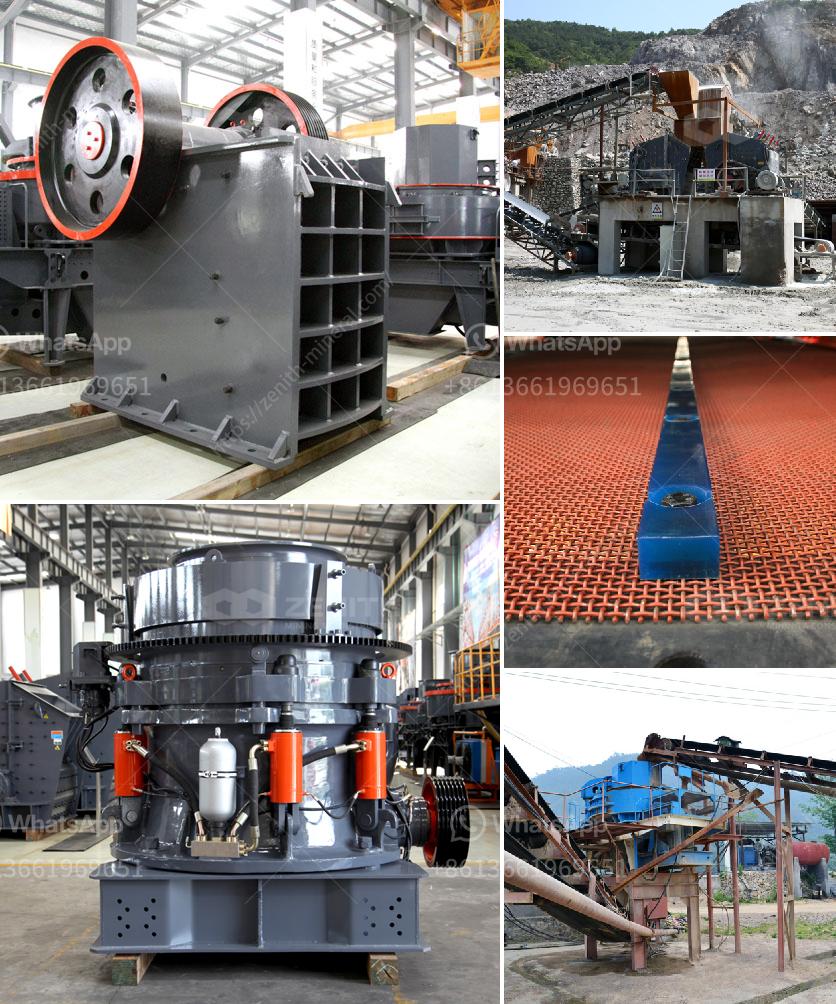To crush rocks or granite, you can use a variety of tools and machinery, depending on the scale of the operation and the desired size of the crushed material. Here are some common methods and equipment used for crushing rocks or granite:
-
Jaw Crusher:
- Description: A jaw crusher is a type of primary crusher used in mining and ore processing. It consists of two plates, one stationary and one that moves back and forth. The rocks are fed into the top of the crusher and are crushed between the two plates.
- Usage: Suitable for large rocks and granite. It is often used in the first stage of the crushing process.
-
Cone Crusher:
- Description: A cone crusher is similar to a gyratory crusher but has a less steep crushing chamber and more parallel zone between crushing zones. It is used for secondary or tertiary crushing.
- Usage: Ideal for medium to hard rocks and granite. It produces a more uniform size of crushed material.
-
Impact Crusher:
- Description: An impact crusher uses impact force to crush materials. It has a high-speed rotor with wear-resistant tips and a crushing chamber designed to throw the rock against.
- Usage: Suitable for softer rocks and granite. It is often used for producing finer material.
-
Hammer Mill:
- Description: A hammer mill consists of a rotating drum with hammers that crush the rock. The material is fed into the drum and is crushed by the hammers as they spin.
- Usage: Effective for small to medium-sized rocks and granite. It is often used in smaller operations or for producing specific sizes of crushed material.
-
Ball Mill:
- Description: A ball mill is a type of grinder used to grind and blend materials. It consists of a hollow cylindrical shell rotating about its axis, filled with balls made of steel or other materials.
- Usage: Suitable for fine grinding of rocks and granite. It is often used in conjunction with other crushers to achieve the desired size.
-
Gyratory Crusher:
- Description: A gyratory crusher is similar to a jaw crusher but has a conical head and a concave surface. The rock is crushed between the cone and the concave surface.
- Usage: Ideal for large-scale operations and for crushing hard rocks and granite.
-
Roll Crusher:
- Description: A roll crusher consists of two rotating cylinders that crush the material between them. The gap between the cylinders can be adjusted to control the size of the crushed material.
- Usage: Suitable for medium to hard rocks and granite. It is often used for producing specific sizes of crushed material.
-
Portable Rock Crusher:
- Description: A portable rock crusher is a mobile crushing unit that can be moved to different locations. It typically includes a jaw crusher, cone crusher, or impact crusher.
- Usage: Ideal for small to medium-sized operations and for crushing rocks and granite on-site.
-
Hand Tools:
- Description: For small-scale or hobbyist operations, hand tools such as sledgehammers, chisels, and rock hammers can be used to break rocks and granite.
- Usage: Suitable for small rocks and granite. It requires manual labor and is not efficient for large-scale operations.
-
Hydraulic Breakers:
- Description: Hydraulic breakers are attachments for excavators or other heavy machinery. They use hydraulic power to break rocks and granite.
- Usage: Ideal for large rocks and granite. It is often used in construction and demolition projects.
Each of these methods and tools has its own advantages and is suitable for different types of operations and scales. The choice of equipment depends on factors such as the size and hardness of the rocks or granite, the desired size of the crushed material, and the scale of the operation.


